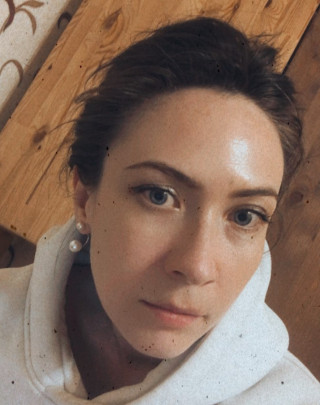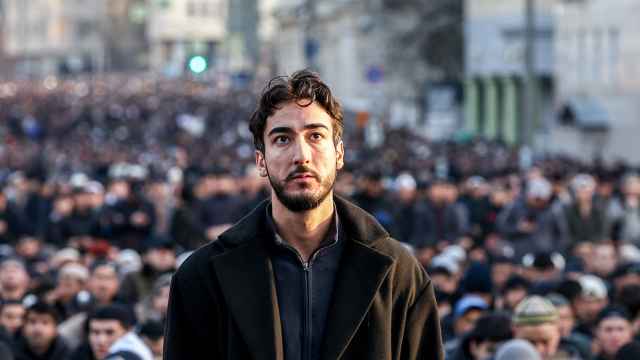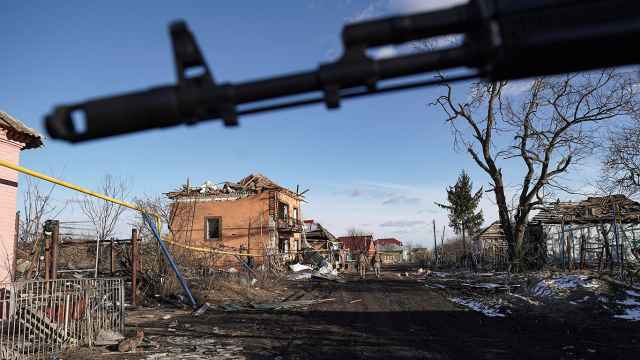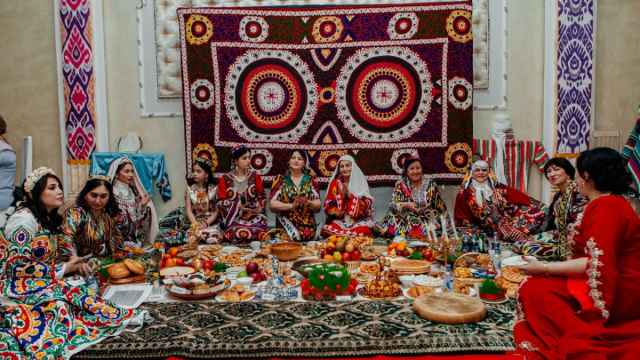Architectural Treasures of Moscow: The Kharitonenko Mansion
The mansion at 14 Sofiiskaya naberezhnaya across the Moscow River from the Kremlin was built in 1893 for the “sugar king” Pavel Kharitonenko and his family.
After the 1917 Revolution, the People’s Commissariat of Foreign Affairs claimed the mansion — and saved the interiors. At first it housed the families of important Soviet diplomats and visitors such as H.G. Wells and Isadora Duncan.
In 1929 the mansion was transferred to the embassy of Great Britain, the first major country to establish diplomatic relations with the U.S.S.R.
After the 1917 Revolution, the People’s Commissariat of Foreign Affairs claimed the mansion — and saved the interiors. At first it housed the families of important Soviet diplomats and visitors such as H.G. Wells and Isadora Duncan.
In 1929 the mansion was transferred to the embassy of Great Britain, the first major country to establish diplomatic relations with the U.S.S.R.
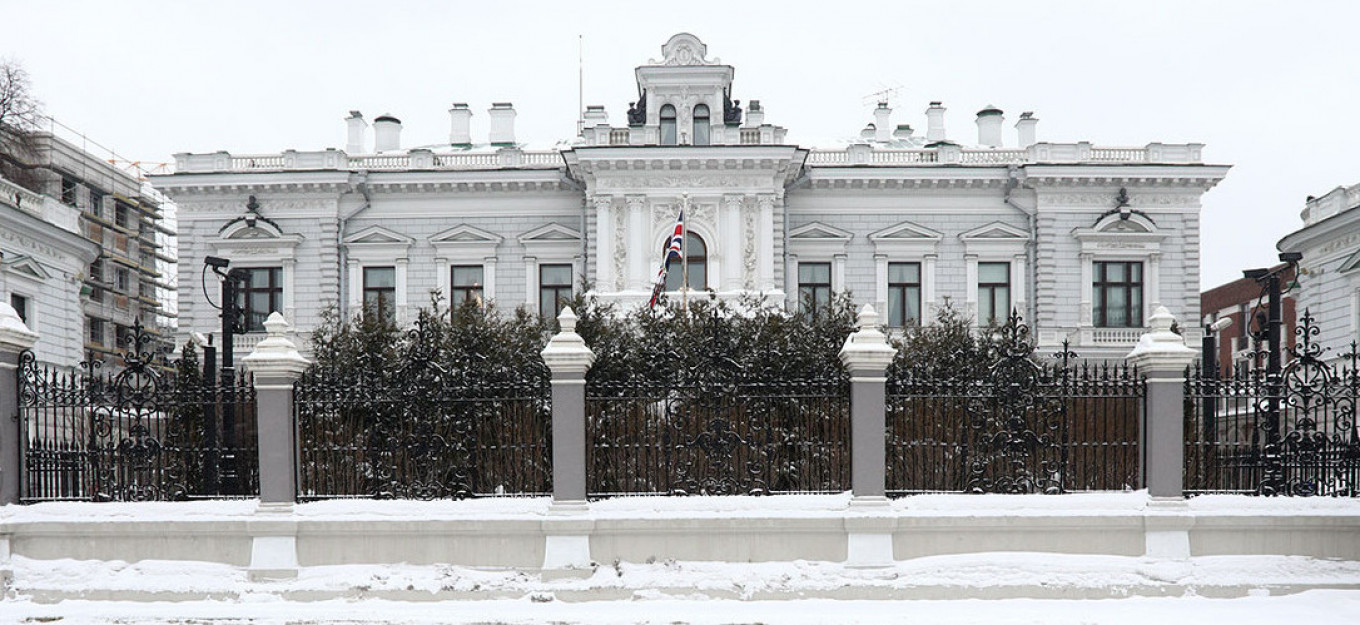
This was the British embassy until 2000, when the embassy moved to a newly built space on the Moscow River. Since then, the building across from the Kremlin has been the residence of the British ambassador.
Andrey Gordeyev for MT
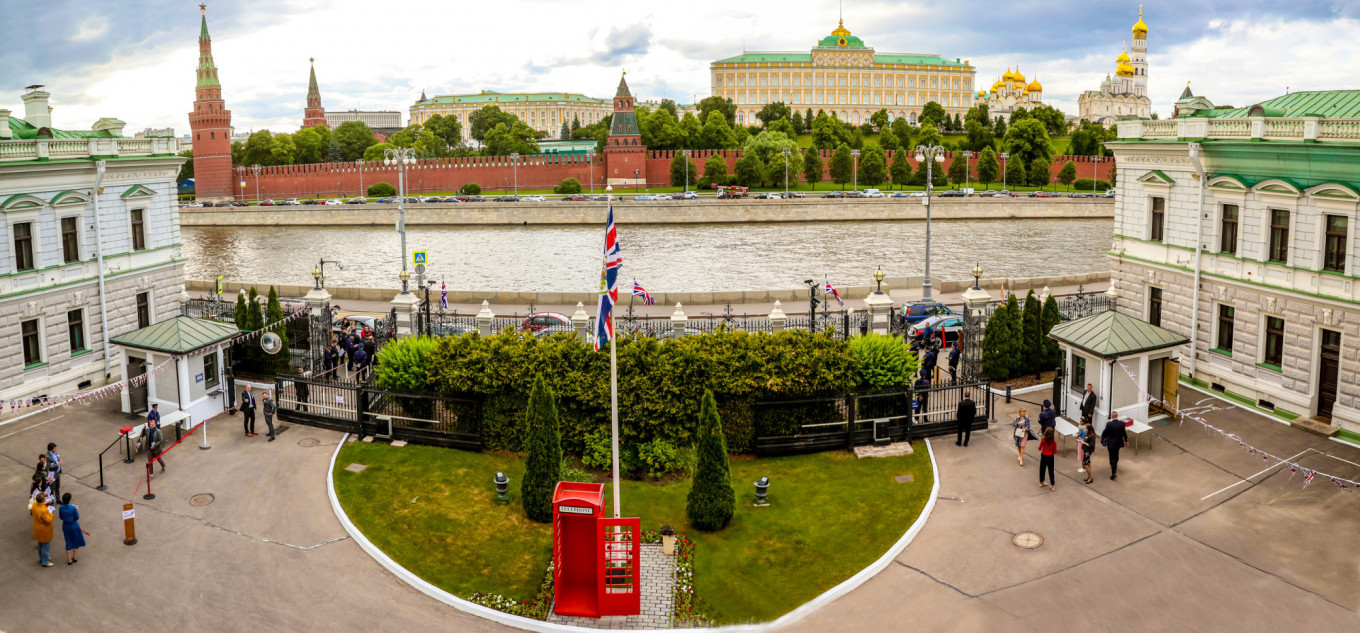
At the end of the 19th century when Kharitonenko began construction, this part of Moscow was an industrial zone. But the magnificent view of the Kremlin was the deciding factor for Kharitonenko, in addition to the fact that his company’s sugar warehouse was next to the property.
Photo: view from the mansion’s balcony.
Photo: view from the mansion’s balcony.
British Embassy Press Office
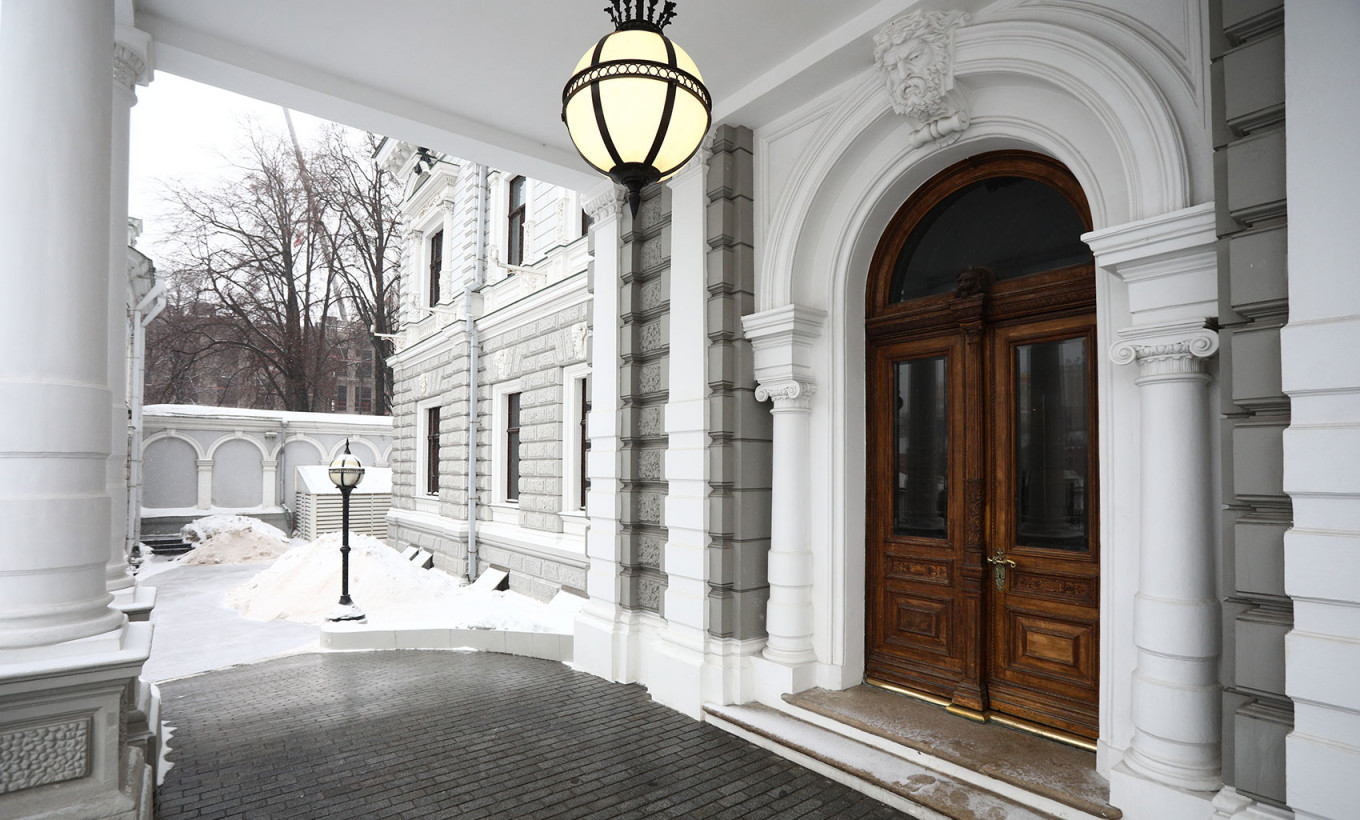
Kharitonenko commissioned the design of the exterior of the mansion to architect Vasily Zalessky, who created a rather typical classical building.
But the most important aspects of the mansion are inside: interiors created by the celebrated architect and artist Fyodor Shekhtel. If you have the chance to visit the residence, don’t rush inside. First take a long look at the original bronze handle on the entrance door: a dog swallowing a fish. And pause for a moment to prepare yourself for what you're about to see.
But the most important aspects of the mansion are inside: interiors created by the celebrated architect and artist Fyodor Shekhtel. If you have the chance to visit the residence, don’t rush inside. First take a long look at the original bronze handle on the entrance door: a dog swallowing a fish. And pause for a moment to prepare yourself for what you're about to see.
Andrey Gordeyev for MT
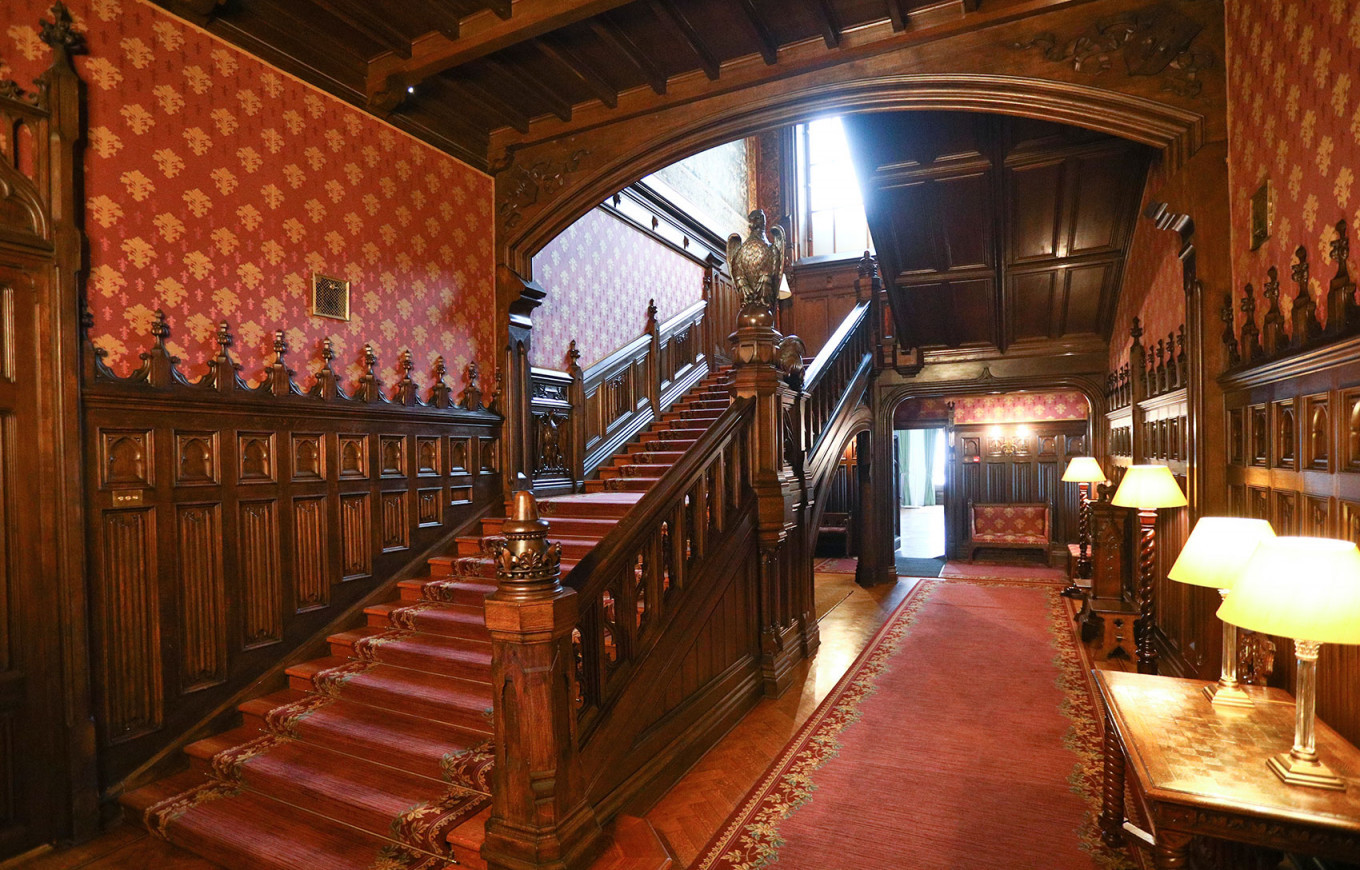
Shekhtel’s interior design blended Gothic with style moderne. All the public spaces have come down to us exactly the way they were conceived by Kharitonenko and Shekhtel. In 2008 the interiors were restored with funds from the British taxpayers and with specialists from the Moscow Kremlin museums.
Photo: the main foyer and staircase.
Photo: the main foyer and staircase.
Andrey Gordeyev for MT
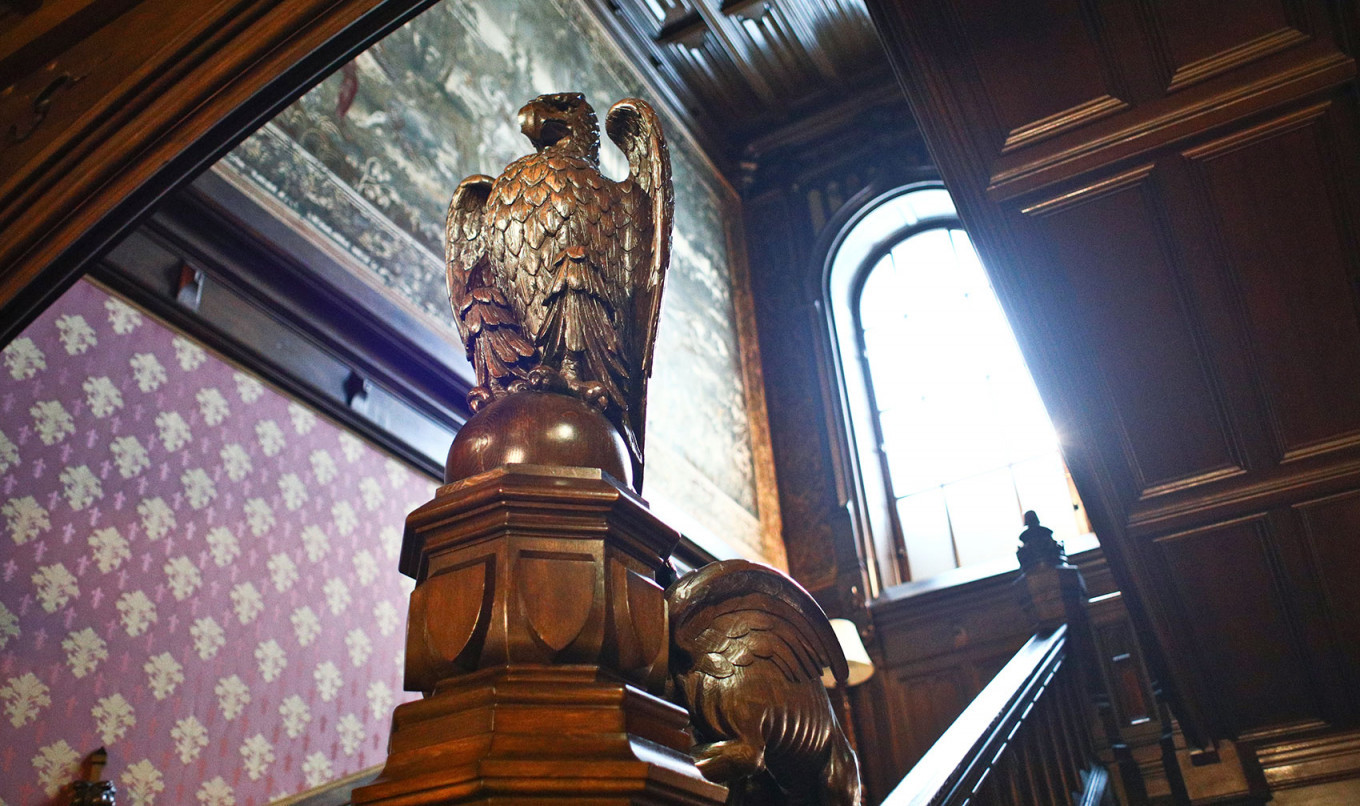
Style moderne is characterized by asymmetry — for example, decorating the main staircase is an eagle and a dragon, and only on one side.
The window on the landing was originally stained glass, which was destroyed in bombing during WWII and not reconstructed. It must have made the entry hall darker than it is at present.
The window on the landing was originally stained glass, which was destroyed in bombing during WWII and not reconstructed. It must have made the entry hall darker than it is at present.
Andrey Gordeyev for MT
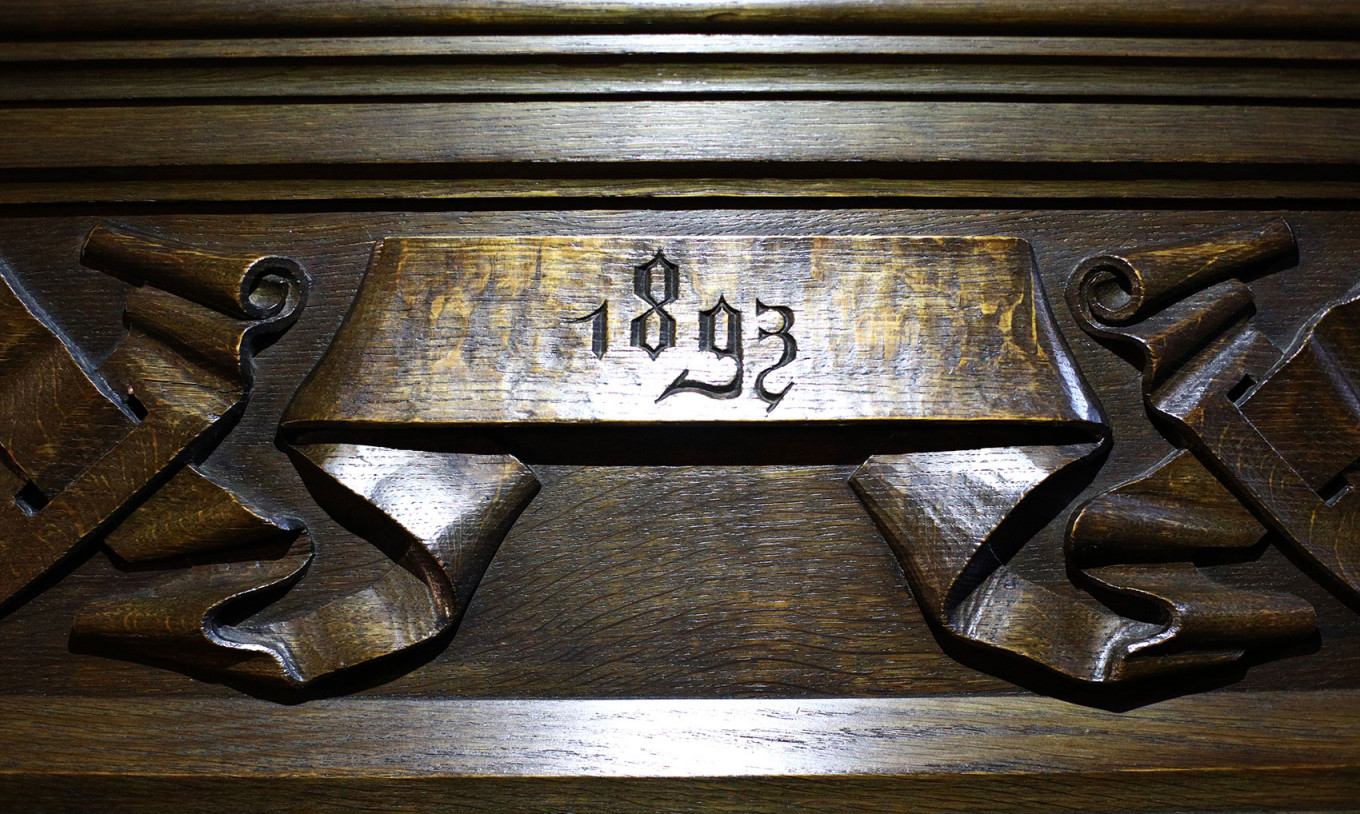
The year the mansion was completed, 1893, is carved into the main staircase. All the wooden elements of the interiors were made in Pavel Schmidt’s Moscow factory of decorative wooden furniture. Ironically, his heir, Nikolai Schmidt, became a strong supporter and sponsor of the Bolsheviks. The Schmidt factory was destroyed in a fire caused by the government artillery during the battle for the Presnya district during the 1905 revolution. Nikolai Schmidt was arrested and died – by his own hand, it seems – in prison in 1907. Ten years later the Bolsheviks nationalized Kharitonenko’s mansion.
Andrey Gordeyev for MT
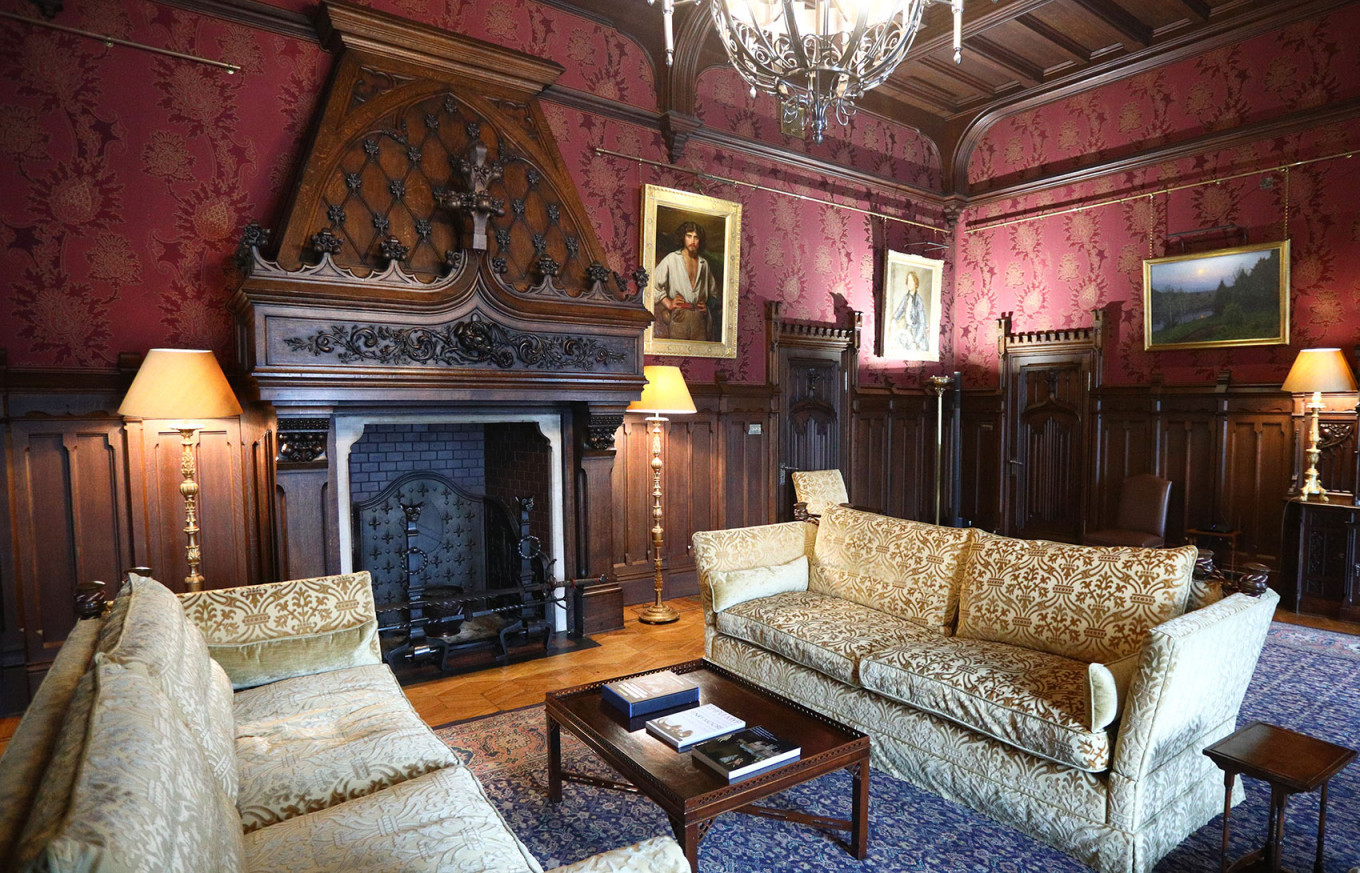
The most beautiful room on the first floor is the Gothic Parlor, and the most beautiful object in the room is the Gothic fireplace. All the fireplaces in the residence are functioning, but they are not used due to safety concerns.
Andrey Gordeyev for MT
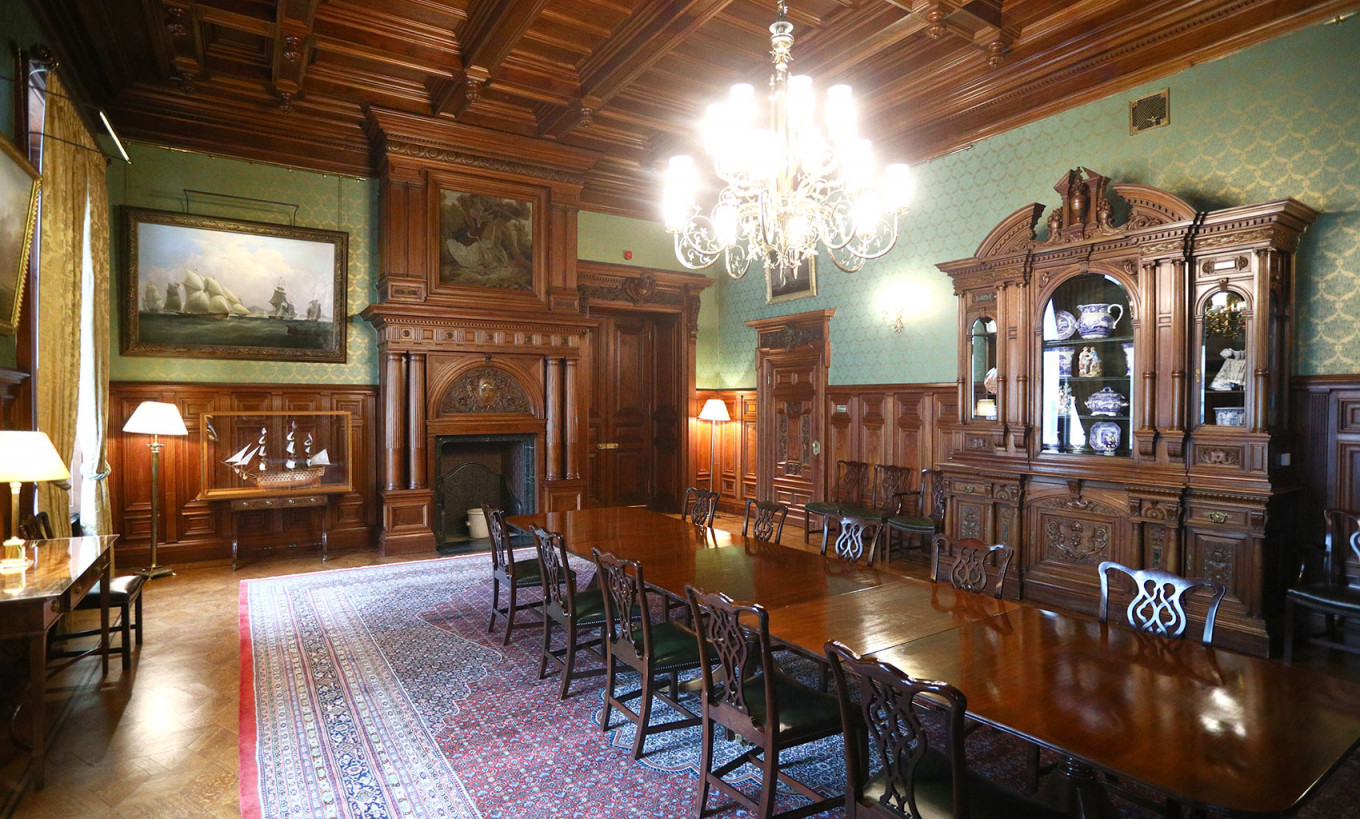
Across from the Gothic Parlor is what is now called the Ship Room, which got the name from the ship models and paintings brought in by the mansion’s new residents.
Andrey Gordeyev for MT
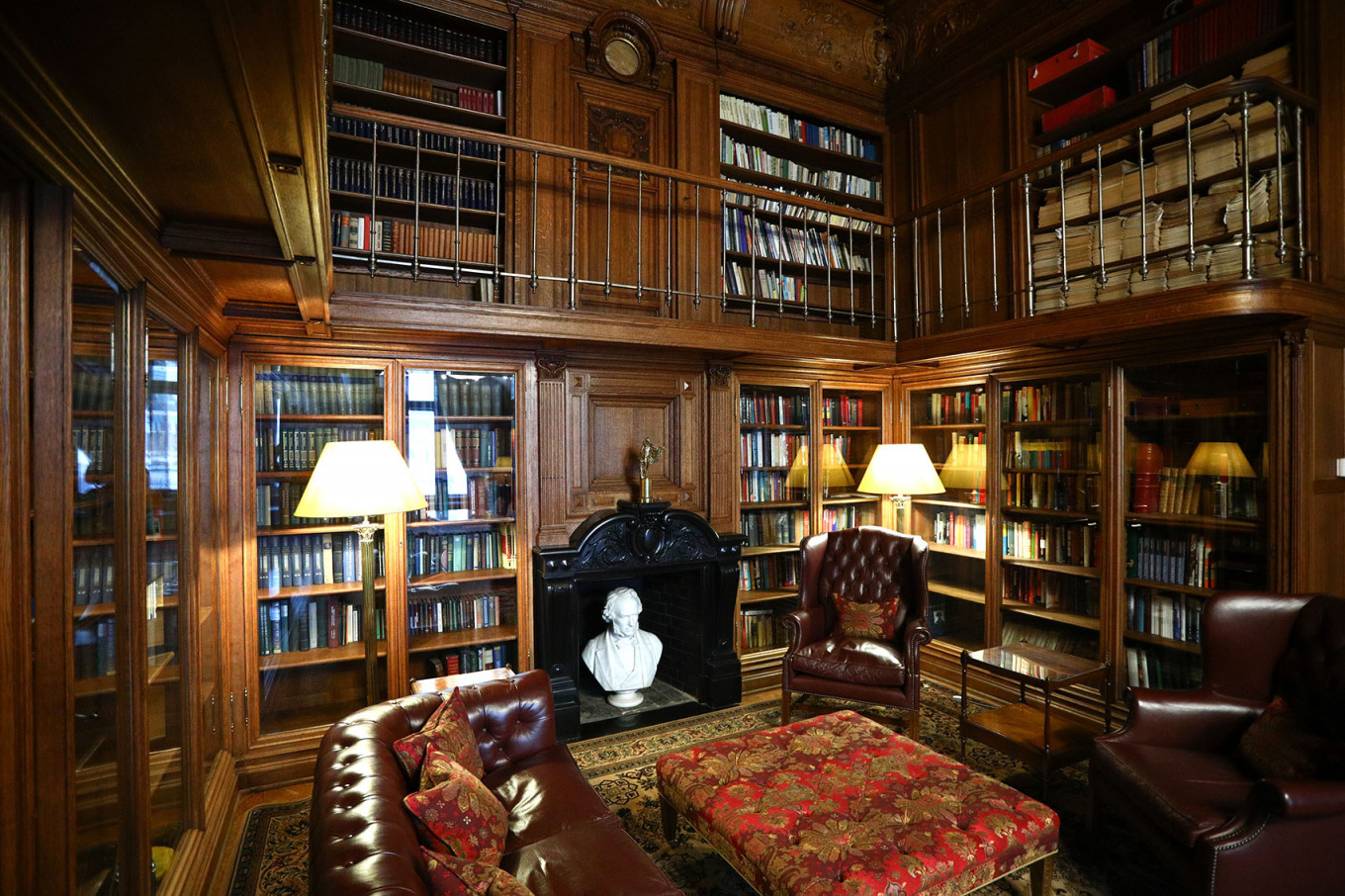
Behind the Ship Room is the two-story Library that has existed since Kharitonenko’s time. The second floor is reached by a metal spiral staircase.
Andrey Gordeyev for MT
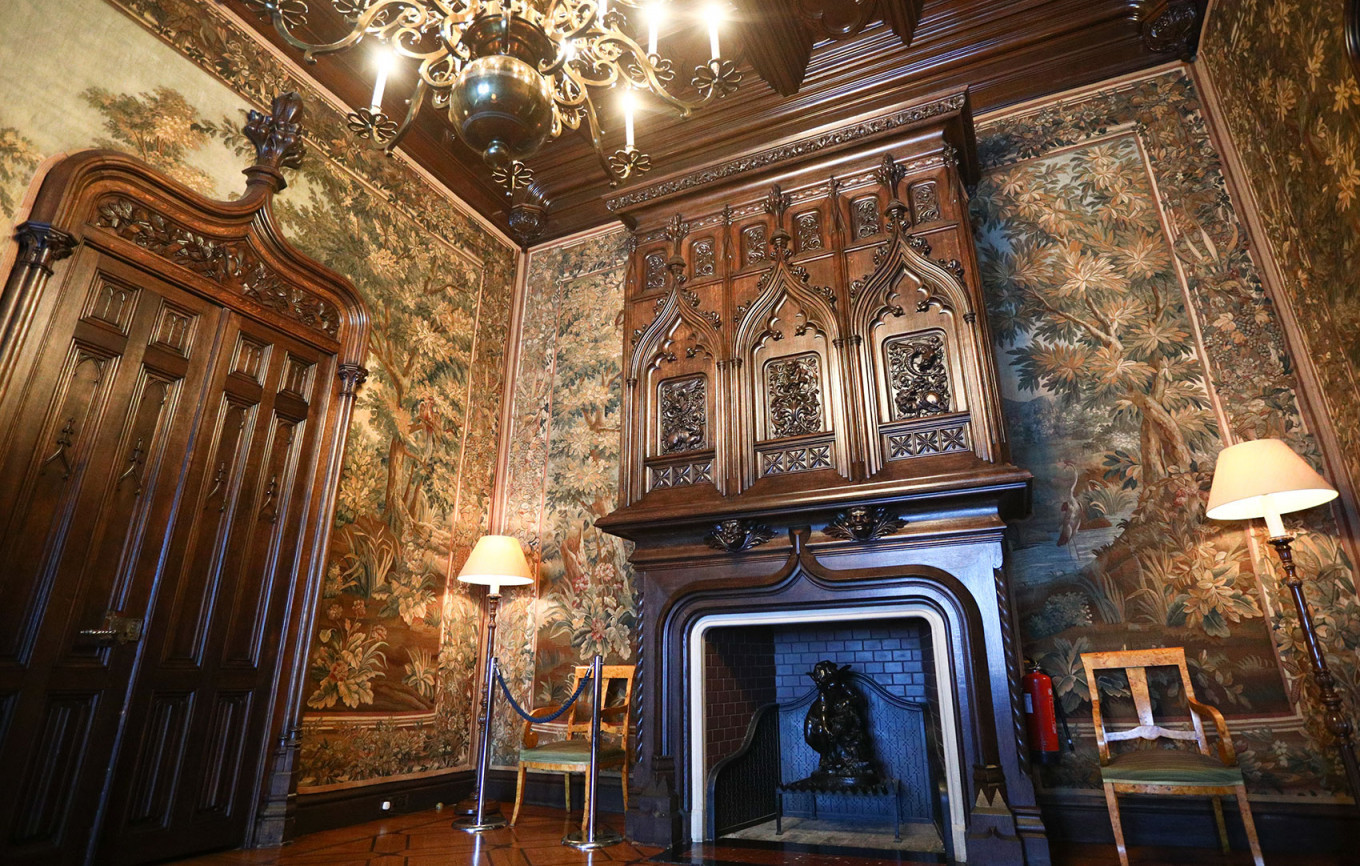
There is yet another splendid Gothic fireplace on the second floor. The fireplace and tapestries decorate the landing and are the first things visitors see when going upstairs.
Andrey Gordeyev for MT
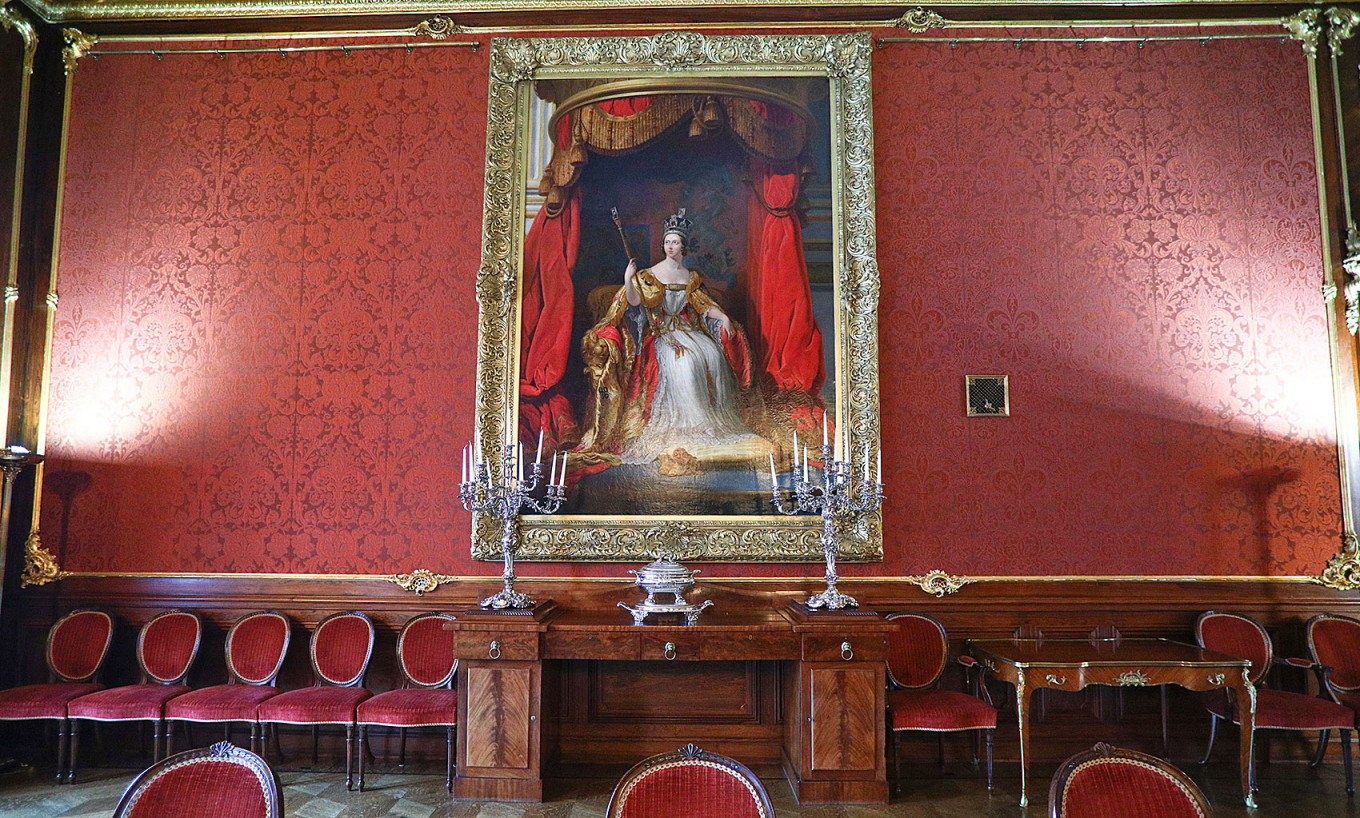
Most official events take place in the Dining Room on the second floor, which once held Kharitonenko’s art gallery. The original function of the room has been maintained to some extent: there are copies of the royal portraits that are sent to all the U.K. embassies around the world. The Moscow residence has portraits of Queen Victoria, King Edward VII and his wife Alexandra, George V and Elizabeth II.
Andrey Gordeyev for MT
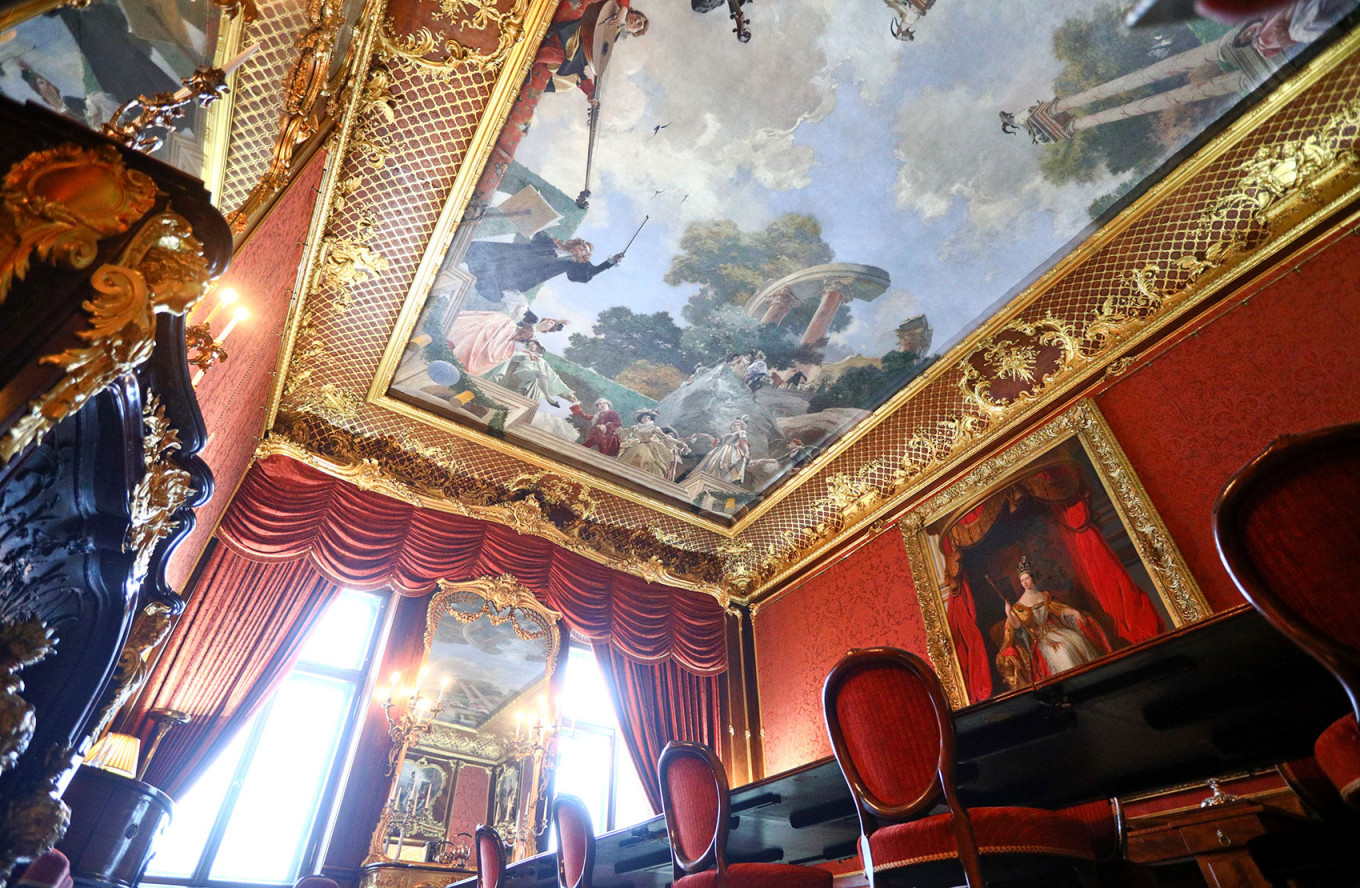
The ceiling in the Dining Room was painted by the French artist François Flameng, whom Kharitonenko brought from Paris to do the work.
Kharitonenko was a major collector of Russian and European painting, but he only cared for realistic art. His collection included works by Nesterov, Borovikovsky, Vasnetsov, Venetsianov, Tropinin, and Vereshchagin. It was Kharitonenko who purchased Ivan Kramskoi’s scandalous “Unknown Woman” that Pavel Tretyakov refused to buy because it was the portrait of a woman of the demi-monde waiting for rich clients in her carriage.
Kharitonenko was a major collector of Russian and European painting, but he only cared for realistic art. His collection included works by Nesterov, Borovikovsky, Vasnetsov, Venetsianov, Tropinin, and Vereshchagin. It was Kharitonenko who purchased Ivan Kramskoi’s scandalous “Unknown Woman” that Pavel Tretyakov refused to buy because it was the portrait of a woman of the demi-monde waiting for rich clients in her carriage.
Andrey Gordeyev for MT
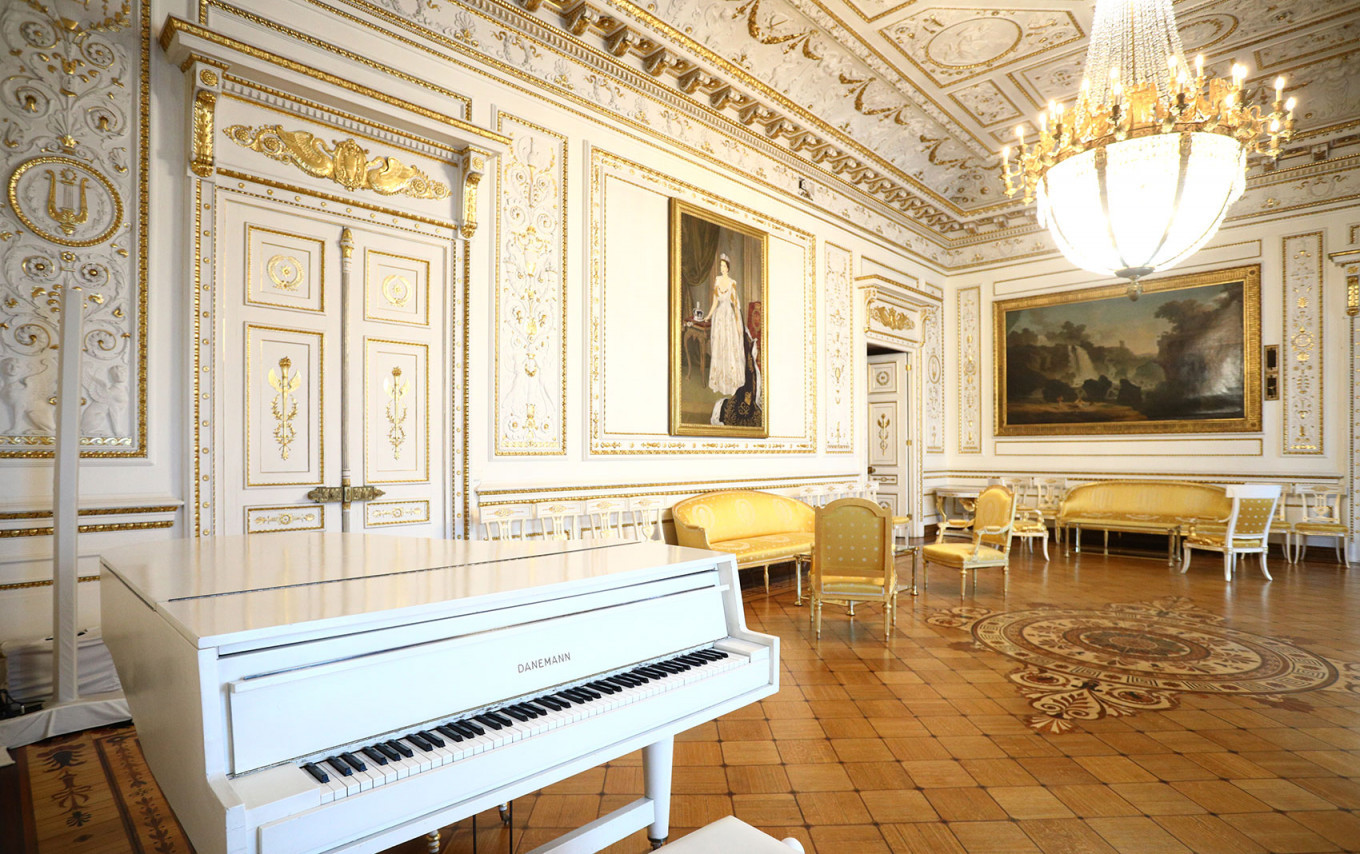
The brightest room in the mansion is the Ballroom, which has windows opening onto the Moscow River and Kremlin. Here Shekhtel traded Gothic for the Empire style.
The only two paintings remaining in the mansion since Kharitonenko’s time are the massive “Landscape” and “Landscape with Waterfall” (in the photo) by the French artist Hubert Robert that the Bolsheviks decided not to dismantle.
The white Danemann piano came with the British in the 1920s.
The only two paintings remaining in the mansion since Kharitonenko’s time are the massive “Landscape” and “Landscape with Waterfall” (in the photo) by the French artist Hubert Robert that the Bolsheviks decided not to dismantle.
The white Danemann piano came with the British in the 1920s.
Andrey Gordeyev for MT
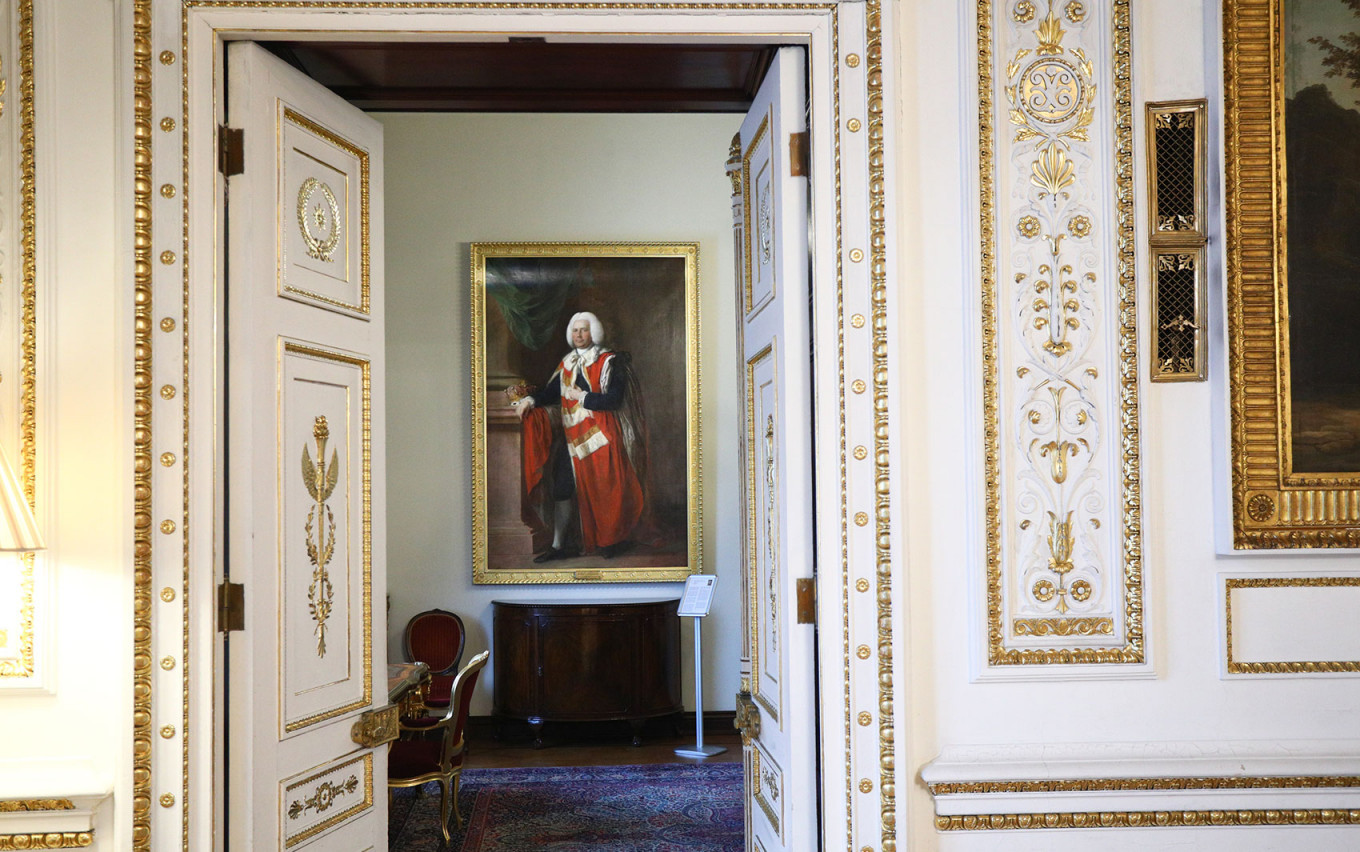
Kharitonenko’s art collection was nationalized and distributed among Moscow’s museums. At present, the State Pushkin Museum has 24 paintings from his collection and the Tretyakov Gallery has 35. A bridge to the artistic past of the mansion is the only original painting brought in by the British residents: "Portrait of the Rev. Robert Sherard, 4th Earl of Harborough" by Thomas Gainsborough.
Andrey Gordeyev for MT
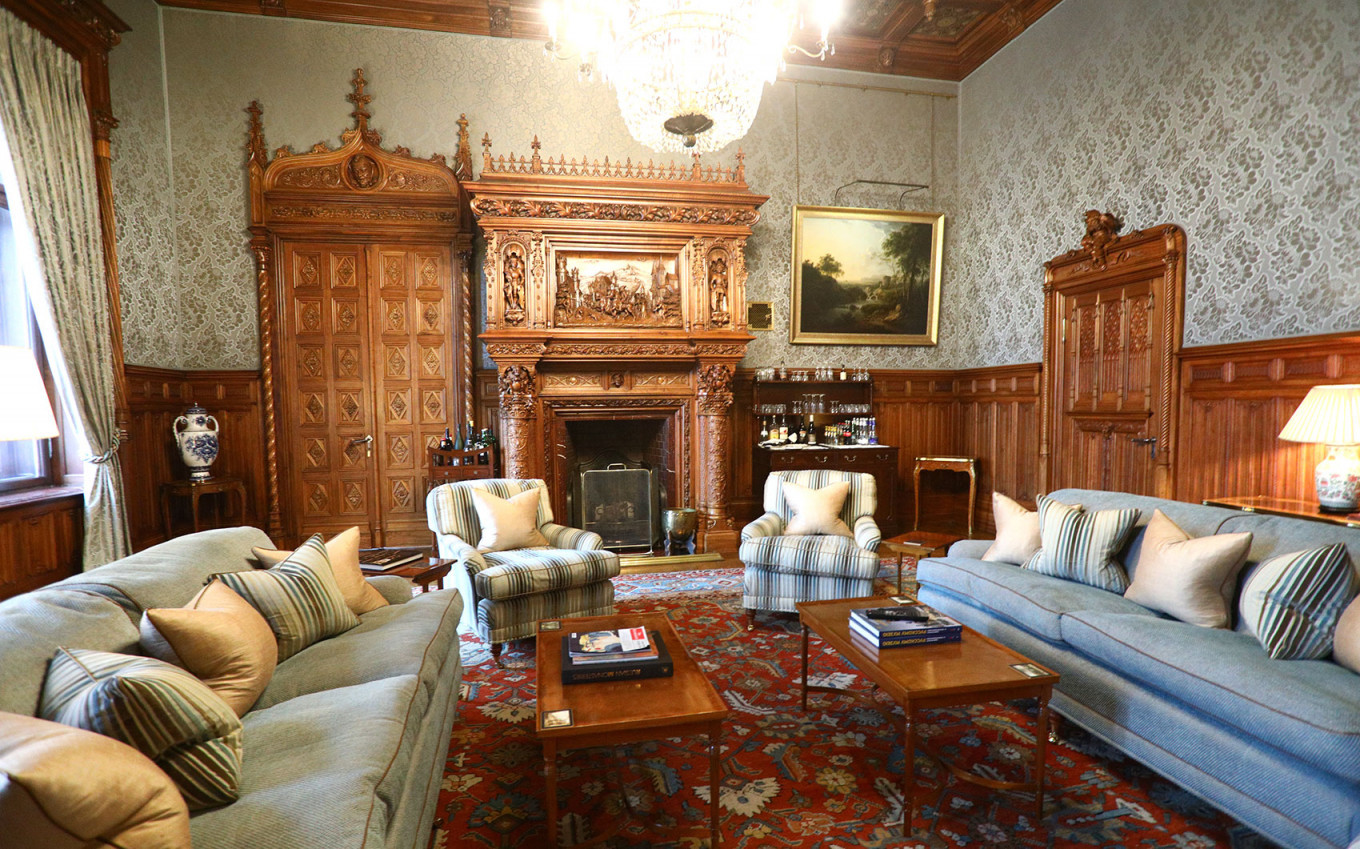
The first-floor rooms are open to the public, while the second-floor rooms are private — where the ambassador, his family and guests live, work and meet with visitors.
One of the private rooms is the Blue Parlor, which was originally used as the parlor of Kharitonenko’s wife Vera. Business meetings are conducted here, but it is closed during public events.
One of the private rooms is the Blue Parlor, which was originally used as the parlor of Kharitonenko’s wife Vera. Business meetings are conducted here, but it is closed during public events.
Andrey Gordeyev for MT
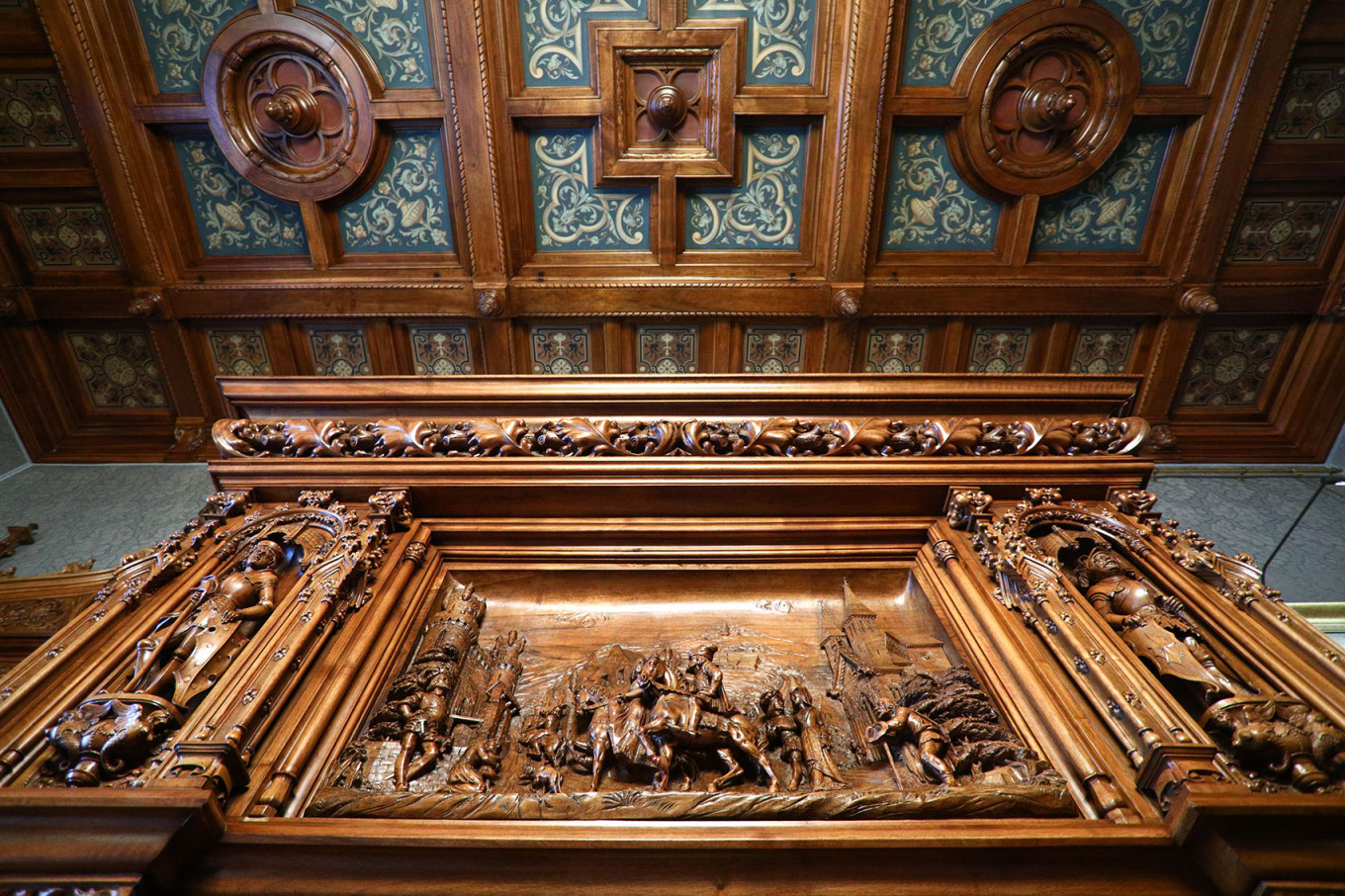
The Blue Parlor is decorated in the Gothic style, but its pale blue walls and ceiling make the space more light and comfortable than the other Gothic rooms in the mansion.
Andrey Gordeyev for MT
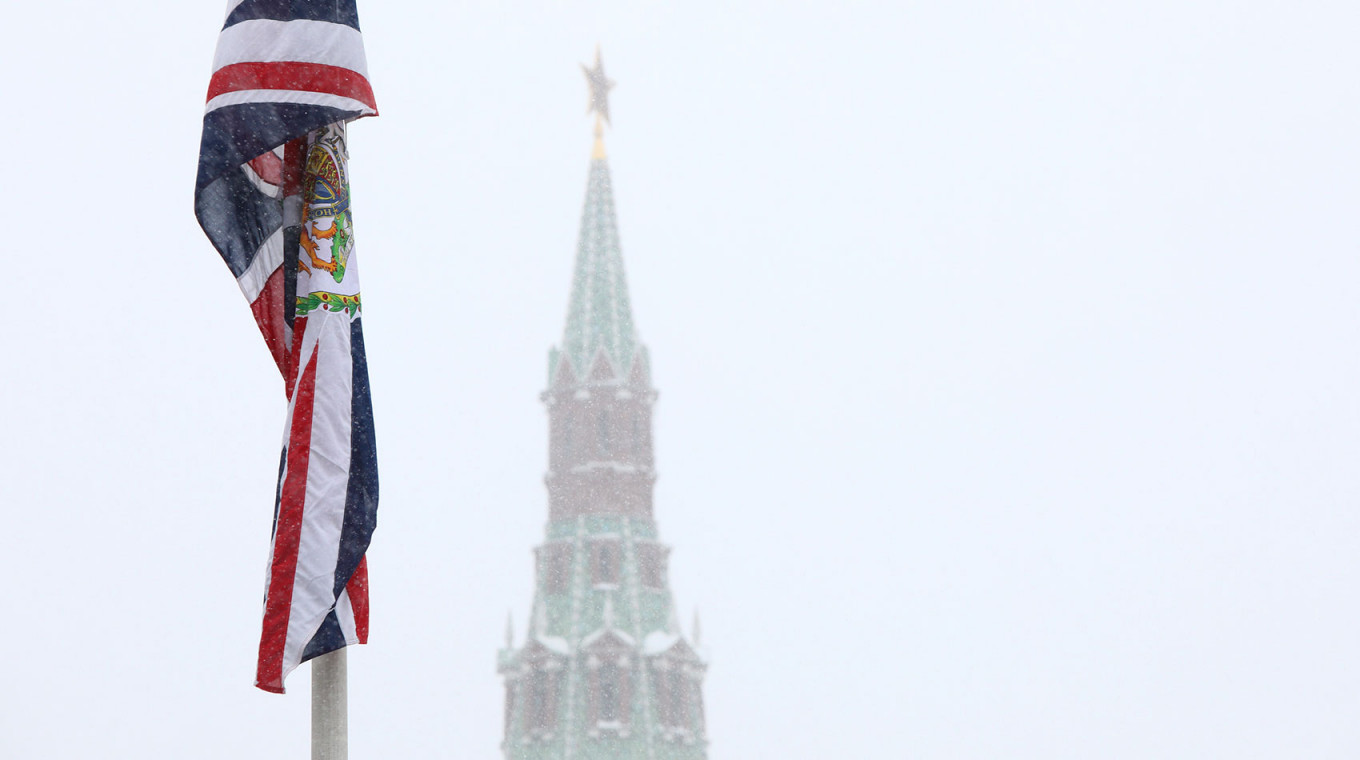
The ambassador’s residence is the territory of the United Kingdom of Great Britain and Northern Ireland. But it’s possible to go inside — even without a visa. There are three ways: be invited by the ambassador or embassy; be invited by a partner organization that is holding an event in the residence (for example, British Brands Day); or visit on World Heritage Day held each year on April 18.
Information in the captions came, in part, from “The British Embassy Residence Moscow. The Kharitonenko Mansion,” by Kathleen Berton. Published with support from the British Embassy, 1991.
Information in the captions came, in part, from “The British Embassy Residence Moscow. The Kharitonenko Mansion,” by Kathleen Berton. Published with support from the British Embassy, 1991.
Andrey Gordeyev for MT

